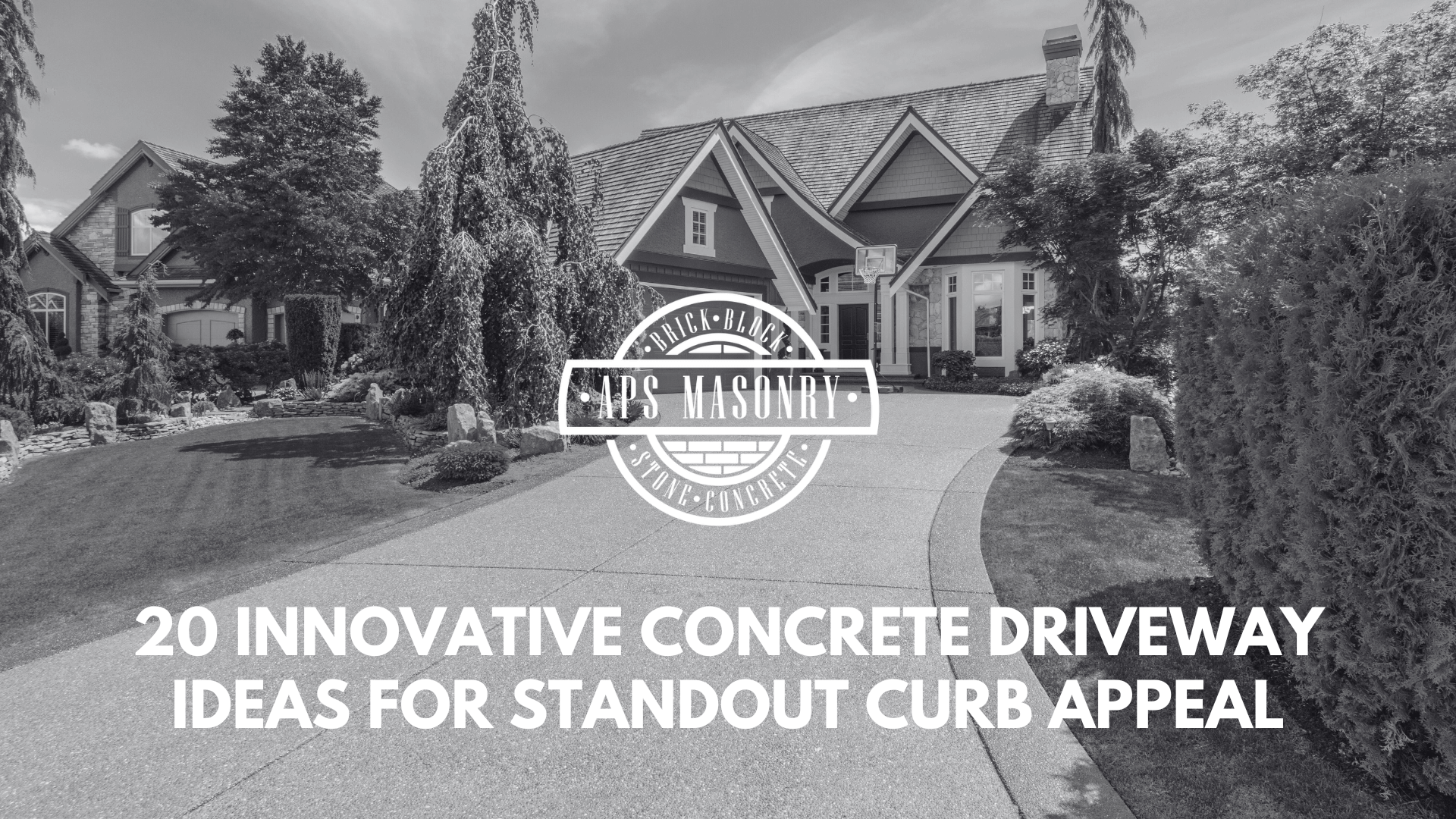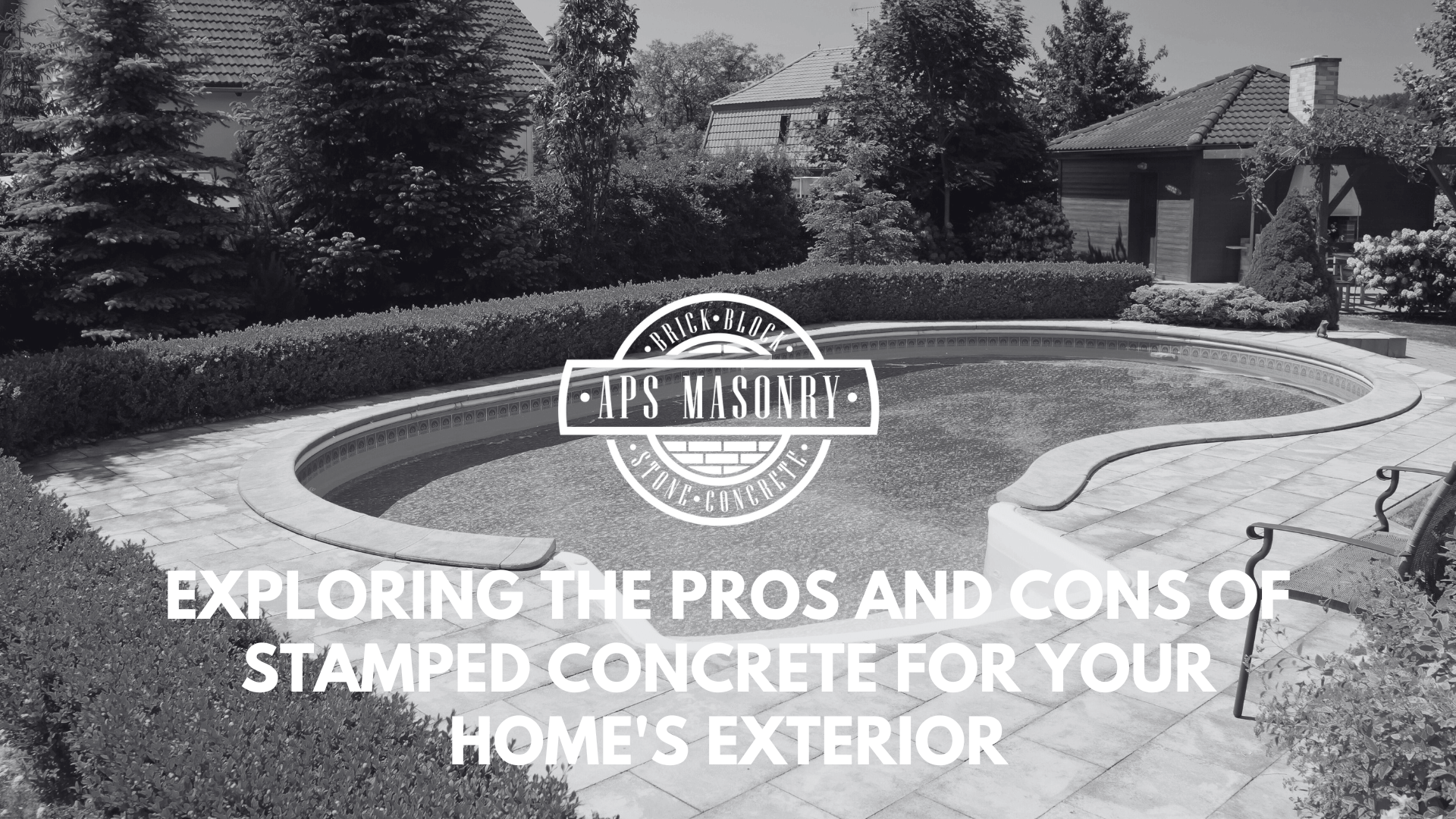
Stamped concrete offers an economical and customizable solution, allowing for a variety of designs and colors that can dramatically transform any exterior. However, it's also important to be aware of its drawbacks, including susceptibility to cracking, fading, and slipperiness when wet. By selecting a skilled contractor and committing to regular maintenance, you can maximize the longevity and beauty of your stamped concrete, making it a practical choice for those looking to balance cost with curb appeal.
Whether you're renovating your driveway or upgrading your patio, this guide equips you with the knowledge to make a decision that aligns with your home improvement goals and lifestyle.
Key Takeaways
- Stamped concrete is a cost-effective and customizable alternative to pricier materials like natural stone or wood, offering homeowners a variety of design options and colors to improve their exterior spaces.
- While stamped concrete is inexpensive and easy to install, it has downsides such as susceptibility to cracking, color fading, and a potentially slippery surface when wet, requiring periodic maintenance.
- Careful selection of a qualified contractor and regular maintenance, including sealing and repairing, is necessary to guarantee stamped concrete surfaces' longevity and continued appeal.
Understanding Stamped Concrete
Stamped concrete, or decorative concrete, as it’s often called, is a technique used to mimic the appearance of higher-end materials such as brick, stone, or even wood on freshly poured concrete. From stamped concrete driveways to stamped concrete patios, this method has found favor among homeowners seeking to improve their exteriors without burning a hole in their pocket.
One popular option is a stamped concrete driveway, which offers a more affordable and simpler design compared to its intricate counterparts in basic stamped concrete. Another sought-after choice is a stamped concrete patio, blending aesthetics with affordability.
The beauty of stamped concrete lies in its design flexibility. The patterns and colors for stamped concrete are virtually unlimited, allowing homeowners to create unique appearances that blend with existing elements or stand apart. Whether you wish to mimic the rustic charm of cobblestones, the elegance of slate, or the warm appeal of wood planks, stamped concrete brings your creative vision to life.
.jpg?width=603&height=339&name=APS%20M%20Template%20(5).jpg)
Stamping Process
The stamping concrete process is quite fascinating. It involves pressing molds or stamping mats into freshly poured concrete to create the desired patterns and textures. With the use of specialized tools, contractors create an array of textures that mirror the authentic look and feel of natural materials, such as:
This technique allows for endless design possibilities and transforms plain concrete into a beautiful and durable surface.
Moreover, color is added to concrete either by mixing it into the concrete or by applying it during the stamping process. This allows for the replication of natural color variations found in various materials, making stamped concrete a great choice for homeowners looking for a unique aesthetic for their outdoor spaces.
Materials Used
The materials used in stamped concrete include a variety of substances that add to its durability and aesthetic appeal. The concrete mixture is a blend of cement, sand, and aggregates, providing the base structure.
Additional elements used to improve the appearance and longevity of the finished product include:
- Color hardeners, which are integrated into the concrete to provide a rich, vibrant hue
- Release agents, which prevent the concrete stamps from sticking to the surface during the imprinting process
- Sealers, which are applied to protect the concrete from wear and tear and to brighten its color.
Advantages of Stamped Concrete
Stamped concrete has been growing in popularity, and its advantages make it easy to see why. It provides an affordable, customizable, and durable solution for homeowners seeking to improve their outdoor spaces.
Cost-Effective
One of the most appealing advantages of stamped concrete is its cost-effectiveness. Compared to other materials like natural stone or pavers, stamped concrete offers a significantly lower cost in terms of material and installation expenses.
While the cost of stamped concrete varies based on the complexity of the design and the number of colors used, on average, homeowners can expect to spend around $8 to $12 per square foot for stamped concrete cost. This is significantly less than what you would spend on a natural stone patio or a wooden deck.
Design Flexibility
Design flexibility is another significant advantage of choosing stamped concrete. It offers homeowners a wide array of patterns, textures, and colors to choose from, allowing for a high degree of customization.
Whether you’re aiming for a modern look with sleek lines and bold colors or a more traditional, rustic design with earth tones and natural textures, stamped concrete has you covered. The color palette choices are vast and varied, including:
- Gray
- Brown
- Red
- Beige
Easy Installation
When it comes to installation, stamped concrete scores high marks for ease and speed. Unlike pavers or natural stone, which require careful placement and fitting, stamped concrete can be poured and shaped quickly, making it an excellent choice for homeowners looking to speed up their home improvement projects.
The process to install stamped concrete involves the following steps:
- Setting up the forms
- Pouring the concrete
- Finishing the surface
- Applying color hardener and release agents
- Imprinting the desired patterns with stamps
The ease of installation and its cost-effectiveness makes stamped concrete a highly desirable option for homeowners looking to upgrade their existing concrete on a budget or a tight schedule.
Disadvantages of Stamped Concrete
Despite its many benefits, stamped concrete is not without its downsides. It’s essential to understand these potential drawbacks before making a decision.
Prone to Cracking
One of the primary cons of stamped concrete is its tendency to crack. Concrete, by nature, is prone to cracking, especially in areas with extreme temperature fluctuations or heavy loads.
Temperature fluctuations can lead to the expansion and contraction of the concrete slab, causing cracks. Similarly, heavy loads can place excessive weight on the slab, leading to potential cracking. These cracks can be repaired, but it is an additional maintenance consideration to keep in mind.
Color Fading
Over time, the vibrant colors of your stamped concrete may start to fade. This is primarily due to exposure to sunlight and weather elements, which can cause the pigments to break down and fade.
While the fading process is slow and can be minimized with regular sealing, it’s still a factor to consider, especially for homeowners living in areas with high sun exposure or extreme weather conditions.
Slippery Surface
Another potential issue with stamped concrete is its slipperiness when wet. The sealed surface of stamped concrete can become quite slippery during rainy or snowy conditions, posing a safety hazard.
This can be particularly problematic in areas with frequent rain or snow. To reduce this risk, various methods, such as applying thin coats of sealers with nonslip additives or scattering fine silica sand into the sealer, can be used.
Comparing Stamped Concrete to Other Materials
To help you make an informed decision, let’s compare stamped concrete with other popular materials for outdoor spaces: interlocking pavers, natural stone, and wood decking.
Interlocking Pavers
Interlocking pavers are a popular choice for many homeowners. They are highly durable and offer a diverse range of design choices. However, they come with a higher installation cost compared to stamped concrete. Moreover, the joint sands of pavers may require periodic care and attention, adding to the long-term maintenance expenses.
Interlocking pavers are also easy to repair; if a paver gets damaged, you can simply remove it and replace it with a new one. This is a significant advantage over stamped concrete, where repairs can be more complex and potentially noticeable.
Natural Stone
Natural stone, on the other hand, offers a high-end, luxurious look. It is exceptionally durable and can last for decades with proper maintenance. However, natural stone comes with a higher price tag, and the installation process can be more labor-intensive and time-consuming than stamped concrete.
Despite the higher cost, many homeowners find the unique beauty and longevity of natural stone tiles to be worth the investment. It’s also worth noting that natural stone can add value to your home, making it a worthwhile consideration if you plan to sell in the future.
Wood Decking
Wood decking offers a warm, natural appearance that many homeowners love. However, it can be susceptible to rot, insects, and weather damage, requiring regular maintenance and potentially resulting in a shorter lifespan compared to stamped concrete.
Additionally, wood decking requires regular inspections for rot, replacement of damaged boards, and cleaning, making it more labor-intensive compared to stamped concrete. Despite the maintenance requirements, many homeowners find the natural beauty and warmth of wood decking to be worth the extra effort.
Tips for Choosing the Right Stamped Concrete Contractor
Choosing the right stamped concrete contractors is important to guarantee the success of your stamped concrete project. Here are some tips to help you make an informed decision.
Firstly, always get multiple estimates. Prices vary greatly between different contractors, so it’s worth getting a few quotes to make sure you’re getting a fair deal. Additionally, check references and view portfolios of their work to check they have the necessary experience and skills for your project.
Lastly, make sure to ask the contractor about:
- Their licensing and insurance status
- Estimated project timeline
- Total project cost and additional fees
- Warranties or guarantees offered
A professional contractor should be able to answer these questions confidently and provide a written contract detailing all aspects of the project.
Maintenance and Care for Stamped Concrete
Regular maintenance and care are important for keeping your stamped concrete looking its best. This typically involves routine cleaning and sealing and addressing any necessary repairs or restoration.
Cleaning and Sealing
Cleaning and sealing stamped concrete every 2-3 years helps maintain its appearance and protect it from damage caused by weather, stains, and wear. Cleaning before sealing involves scrubbing the surface with a mixture of soap and water to remove any stains, then rinsing thoroughly with clean water.
The type of sealant used can also make a big difference. A solvent- or water-based acrylic is generally recommended, as it’s easy to apply, breathable, and UV resistant.
Repair and Restoration
Over time, your stamped concrete may require some repairs or restoration. This could include addressing cracks, color fading, or other issues. Cracks can be repaired by cleaning them, filling them with a suitable repair material, and smoothing them out.
For more extensive repairs or restoration, it’s generally recommended to seek professional help. While the cost can vary based on the extent of the damage, keeping your stamped concrete well-maintained helps prevent more significant issues down the line.
Summary
Stamped concrete offers an affordable, versatile, and durable solution for improving your outdoor spaces. With a wide range of design options, creating a unique look that complements your home and landscape is easy. However, it’s essential to understand the potential downsides, such as being prone to cracking, color fading, and being slippery when wet.
By comparing stamped concrete with other materials and understanding the importance of choosing a reputable contractor and regular maintenance, you can make an informed decision that suits your specific needs and budget. Remember, the right choice will increase your home’s curb appeal and provide a comfortable and durable space for you and your family to enjoy for years to come.
Frequently Asked Questions
Is stamped concrete outdated?
No, stamped concrete is not outdated, but some patterns may be considered outdated due to how common they are.
Does stamped concrete crack easily?
Stamped concrete is durable and resistant but can still crack, especially in cold temperatures or under heavy weight. With proper care, it can last a long time.
What is the lifespan of stamped concrete?
After installing stamped concrete properly, it can potentially last just as long as non-stamped concrete, which is about 25 years.
What is stamped concrete?
Stamped concrete is a decorative technique that allows patterns and textures to be imprinted onto freshly poured concrete, mimicking the appearance of natural materials like stone, brick, or wood.
How often should I seal my stamped concrete?
You should seal your stamped concrete every 2-3 years to maintain its look and protect it from weather, stains, and wear.
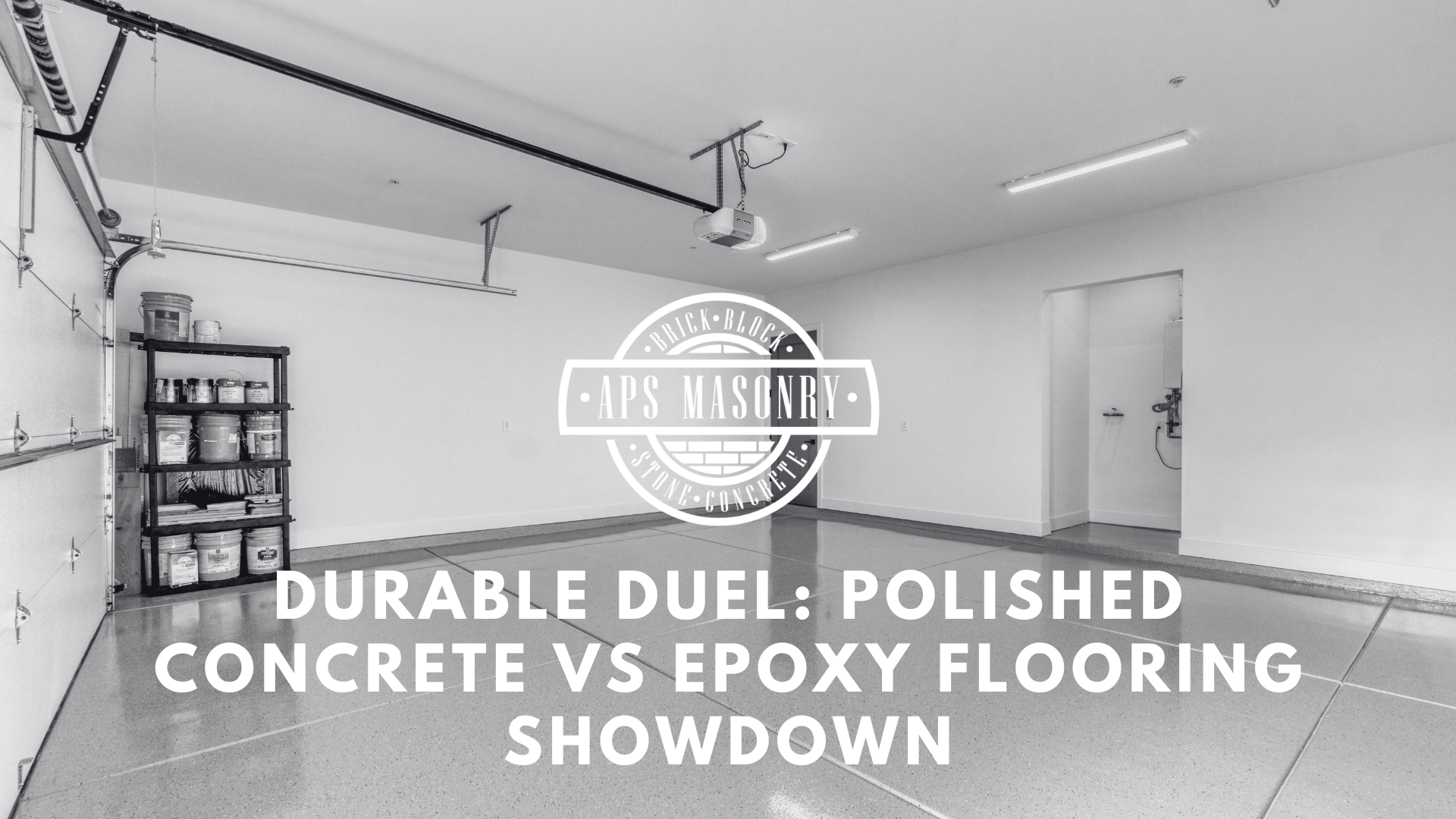
1 min read
Polished Concrete vs Epoxy Flooring: Which is Better?
Polished concrete and epoxy flooring are two popular options for creating durable floors with a refined look. This guide helps you decide which is...
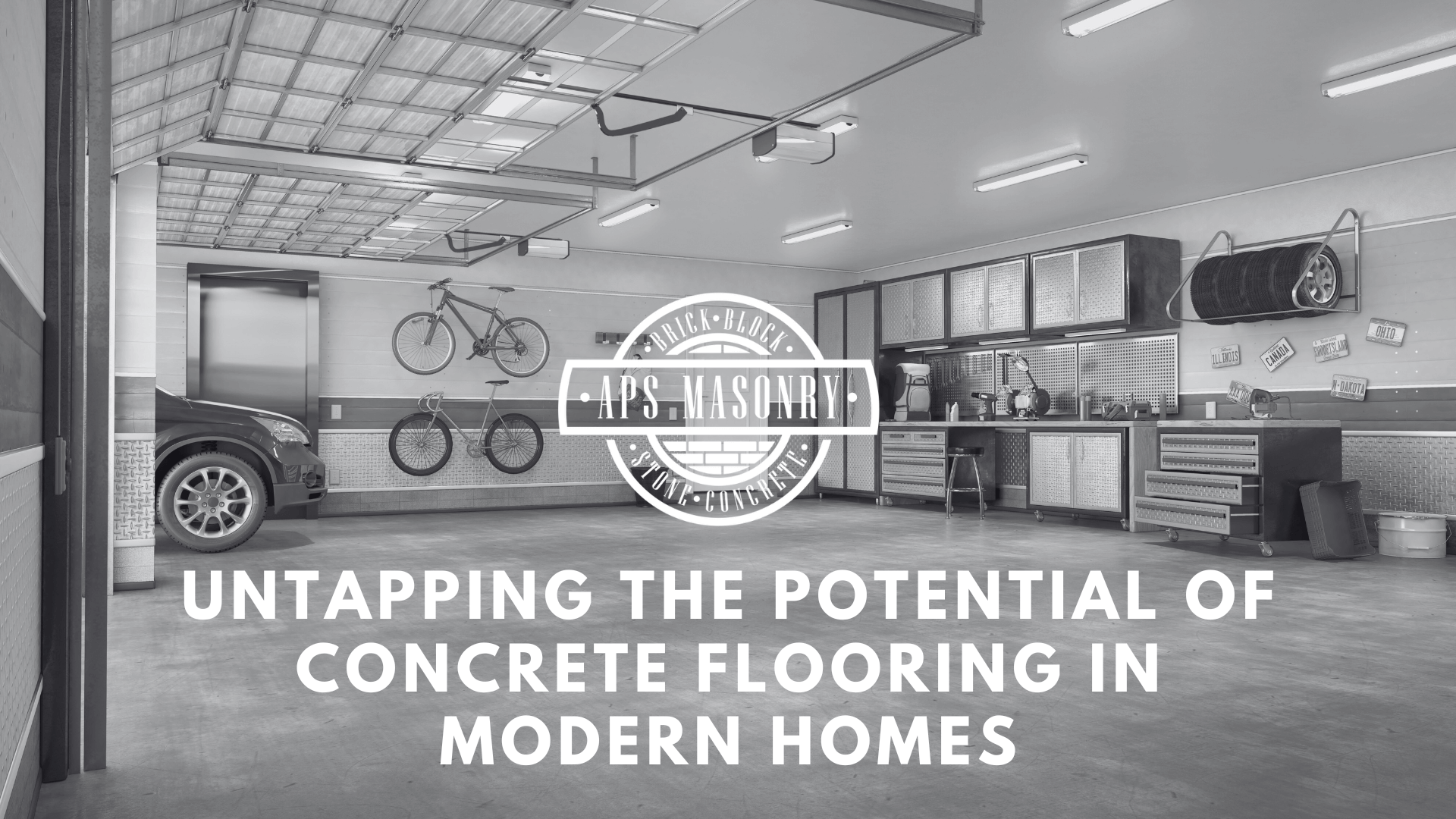
Concrete Floors in Homes: Modern, Durable and Customizable
Concrete flooring is becoming a popular choice for modern homes because it's durable, cost-effective, and versatile in style. Traditionally used in...

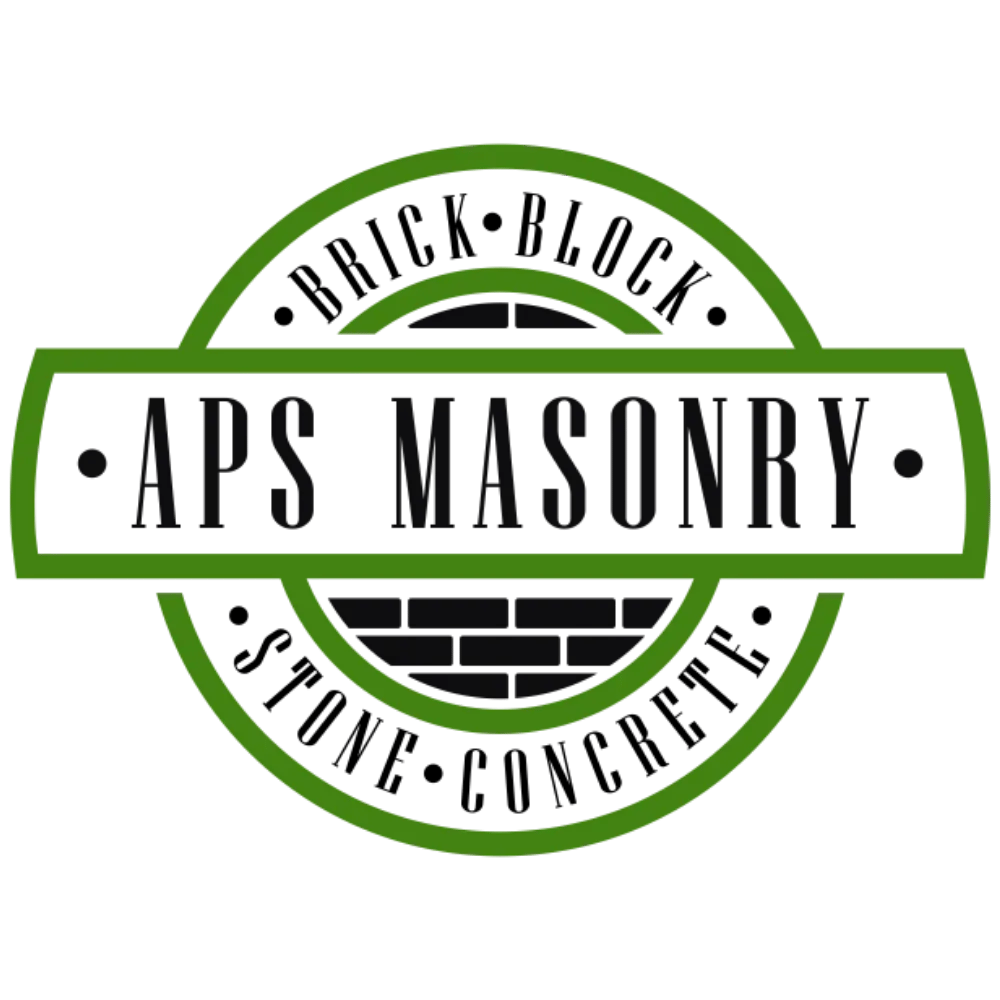
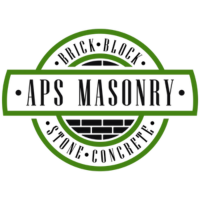 Alec Serowatka
Alec Serowatka
